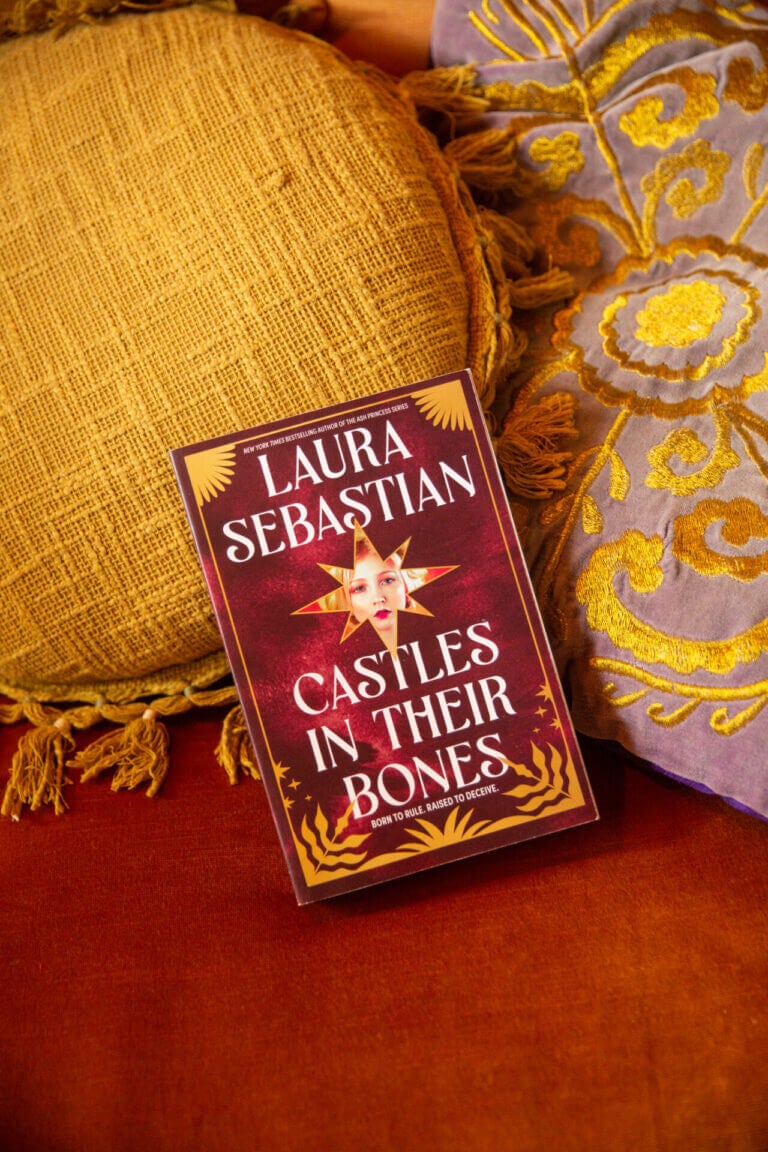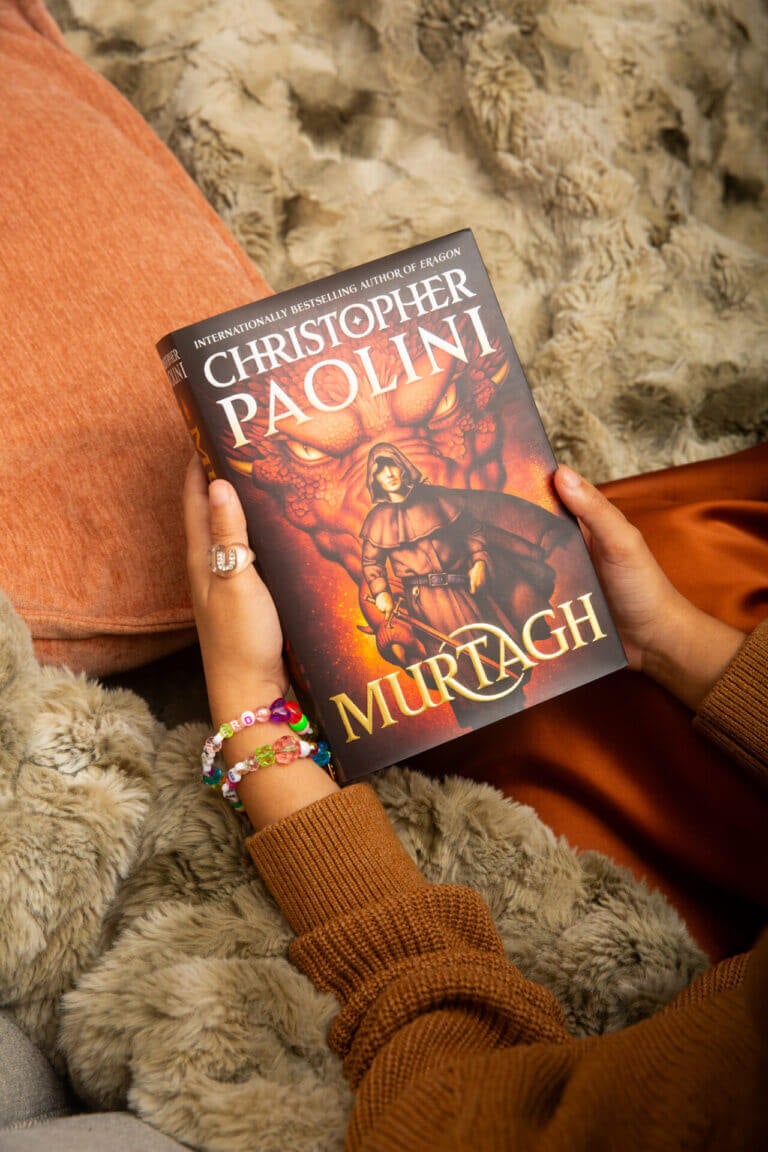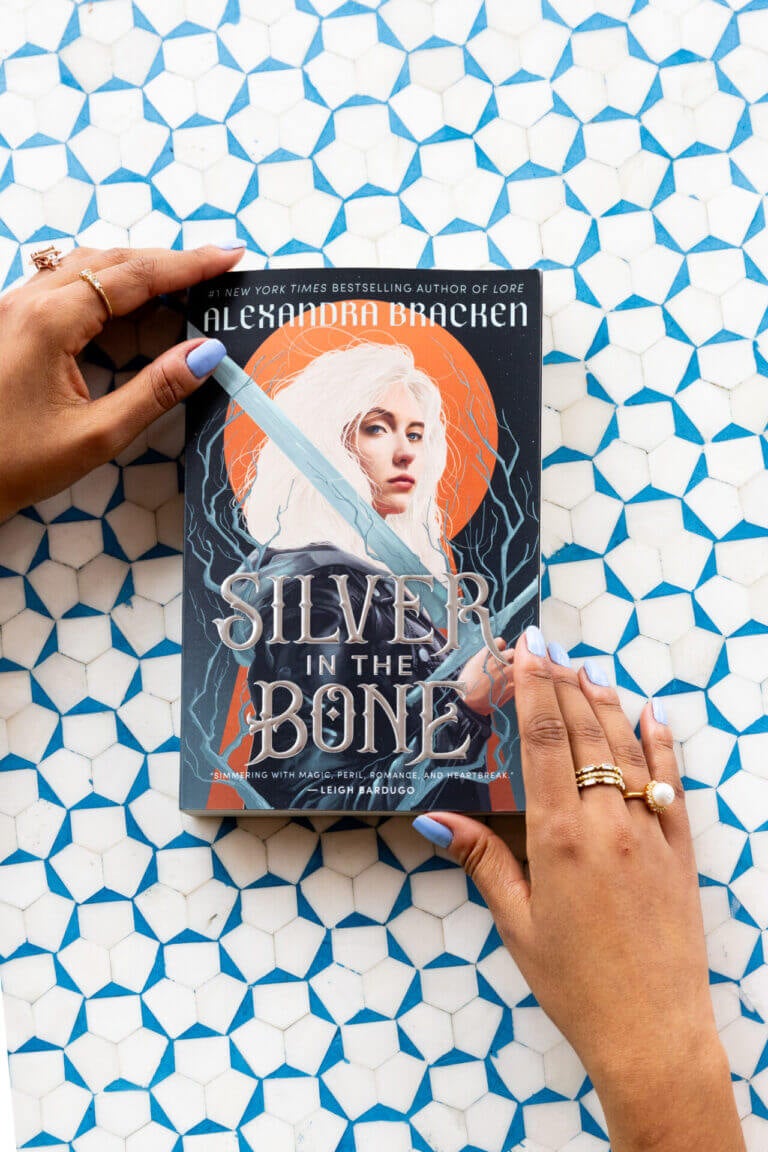Legendary and beloved fantasy author Tamora Pierce is back with a new adventure set in the world of Tortall, and we got the inside scoop!
In this exclusive Q&A, Tamora Pierce tells us about returning to the world of Tortall and her history of creating kick-ass heroines.
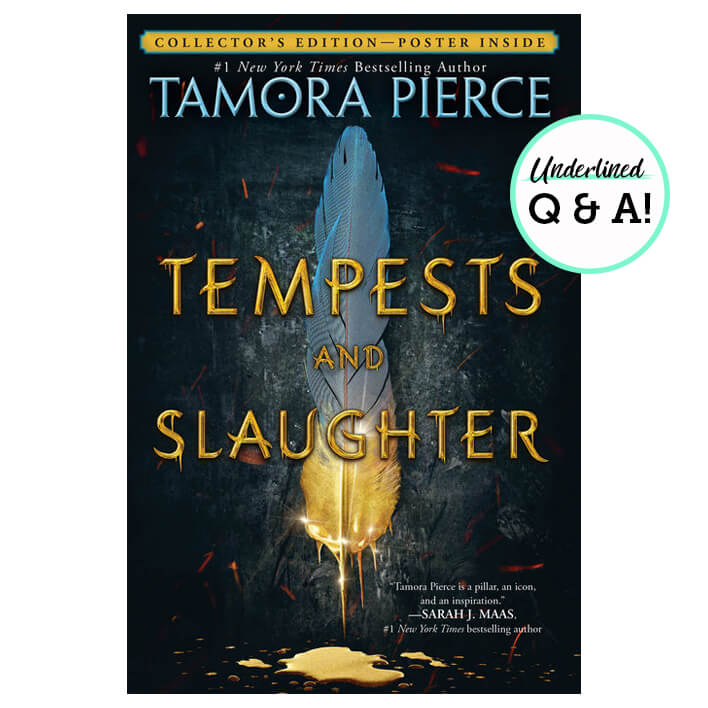
1. People have been so excited to have a new Tamora Pierce book coming out. What inspired you to write this new story?
Fans asked me for it, and I do like to give them what they want, at least in terms of basics. They wanted to know more about both Arram/Numair’s time at the university in Carthak and about his friendships with Ozorne and Varice from The Emperor Mage. Not only was it fun to return to characters we’d met before, like Lindhall Reed the biomage, Sarge, and the Graveyard Hag, but I got to reveal other very unusual people and acquaintances from those years. I also got to show, vividly, that just because you have a great deal of power doesn’t mean you’ll be good at wielding it.
2. Was it easy for you to return to the world of Tortall?
It’s always easy for me to return to Tortall. I’ve spent so much time there, either writing about it, answering fans’ questions about it, or daydreaming about stories or future books about it that I know it very well. It’s the second place I live in, if that doesn’t sound too peculiar.
3. People have said that you are the creator of the “kick-ass heroine” in YA fantasy. What made you want to write about female characters?
Oh, piffle. What about Robin McKinley, or Anne McCaffrey, or Mercedes Lackey, or Bruce Coville, or Patricia Wrede, or Diane Duane? I’m just loud about it, and obvious that this is my goal and my grail.
Actually, I found very few active female heroes as I grew up. The three notable ones I discovered in teen books all gave up being active heroes at the end of their great adventure. Edgar Rice Burroughs had fierce women, but I moved on from him by sixth grade and even forgot his fighting women. Louisa May Alcott’s girls were active and energetic, boating, running, sledding, skating, shooting archery—but again, I moved on from them by middle school. Tolkien’s warrior gave up the sword to become a wife, mother, and healer (I saw no reason why she had to give up fighting to do the other things—the battle season only lasts during late spring and summer); Robert Howard’s fearsome pirate queen in her onstage time danced her love-dance (naked) for Conan, and her vicious pirate crew still obeyed her orders (young as I was, I knew that was a crock of monkey turds); and C. L. Moore’s Jirel of Joiry once asked her crew why they “cowered in the corner like so many women” (we do not diss our own sex unless we want to breed disrespect among our auditors). I didn’t find Howard’s Red Sonja in his books, but in the comics—in a chain-mail bikini. No woman who has fallen asleep in the shade—let alone a snowy forest—in a wet bathing suit ever repeats that mistake.
I wrote what I wanted to read: girls kicking butt. Fierce girls. Girls who stood up against dangers. The first character I found to satisfy my hunger was Anne McCaffrey’s Lessa of Pern in Dragonflight. Then came Robin McKinley, Barbara Hambly, and Elizabeth Moon in the 1980s, and things improved mightily, but by then I was hooked on my fans and on the possibilities for teenage heroes in settings in which there was no category for teenagers, only “children” and “adults.” I broadened my definition of what makes a hero, but I hope to show that there are ways for any girl (or any person, for that matter) to matter in a positive way. And now I have begun the presentation of a leading boy/man for Tempests and Slaughter (if you don’t count Briar from the Circle of Magic books, who started as part of a group of heroes).
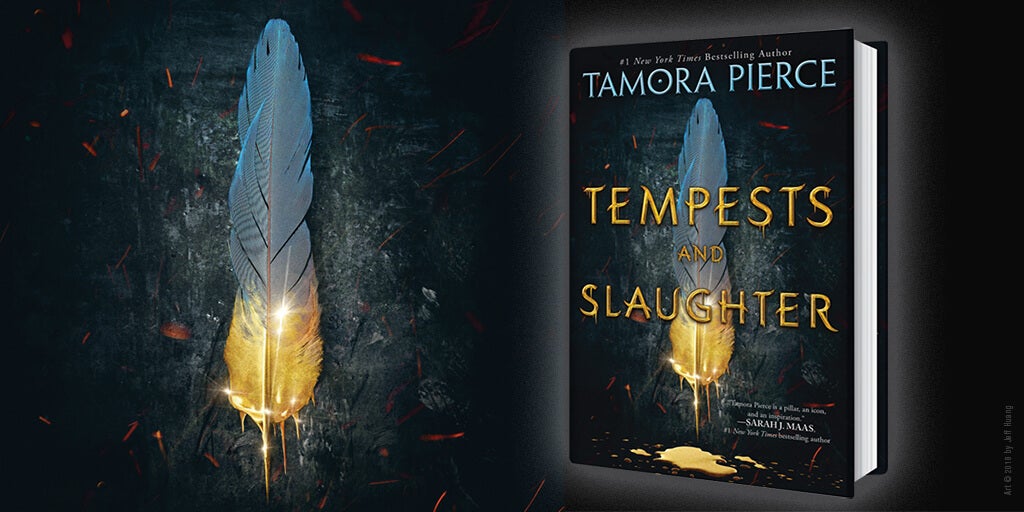
4. Do you have any favorite female characters in books or movies?
Regarding favorites from my childhood: I still love Caddie Woodlawn of the book of the same name, Kit (The Witch of Blackbird Pond), and dogged Mara of Mara, Daughter of the Nile, but the queens of these are Beth and Jo March of Little Women. Jo is obvious—I think every American girl who aspires to be a writer has Jo as her spiritual godmother. Beth is harder, and I had to be an adult to understand the sheer, blood-deep courage it took this timid, gentle, health-impaired girl to go out into a plague zone on a winter’s night, knowing all the dangers, and help that poor family get warm, get clean, get fed, get spiritual and neighborly help, and then return home, knowing she was about to be very ill. It opened my eyes to more than sword-slinging courage, though I am still very fond of a good fight scene.
5. People are loving Tortall: A Spy’s Guide. Where did the idea of creating a guidebook come from?
It’s been so long (five years? seven years?) since we undertook the original project. . . . I think there were a number of guidebooks coming out at that time from different YA writers, and since my editors knew I kept records and lists and maps through every series, they thought it would be fun to do something similar with my central kingdom of Tortall. I recruited some friends/fans—Lisa, who had been maintaining the timeline of events in the books for years; Julie, my assistant, who also became my cowriter/writer-wrangler (or we never would have gotten anywhere); Megan Messinger, who does stage dance and fight choreography in addition to writing; Judy Gerjuoy, science fiction convention runner and SCA member and food and dining maven; and my husband, Tim, who has been with me since the first Alanna book was published and has helped me through plot tangles ever since.
On top of all that, we were inspired simply, I think, because we were having such a good time seeing what these people—from the books and outside them—were up to when we weren’t looking!
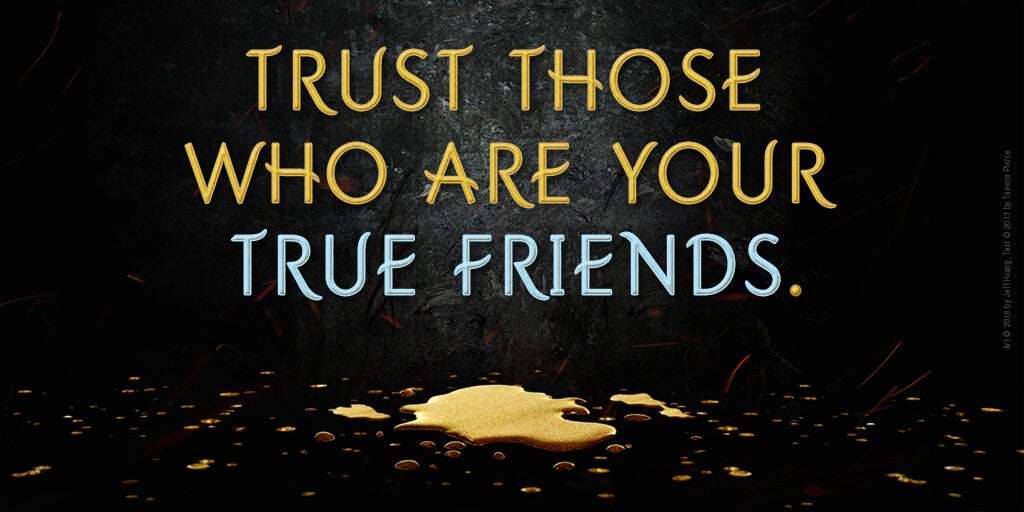
6. Do you have any unique writing habits?
The only thing I can think of is this: I like to take multi-book contracts—it gives me a feeling of security. As a result, I begin to think about the next book or series well in advance, working out plot, setting, and main characters. By the time I start the new book, I’ve been turning it (and its successors under the new contract) over in my head for four to six years (in the case of the Arram/Numair books, more like eleven to twelve by the time the trilogy is done). I know the main plot elements and how many books will be needed (only to be woefully wrong in the case of the Arram books), and I have even begun to cast lesser characters. I’ve done the largest amount of research, from environment to wildlife to plot conflicts to the culture on which I’ll base the setting. That’s the most unique thing about what I do.
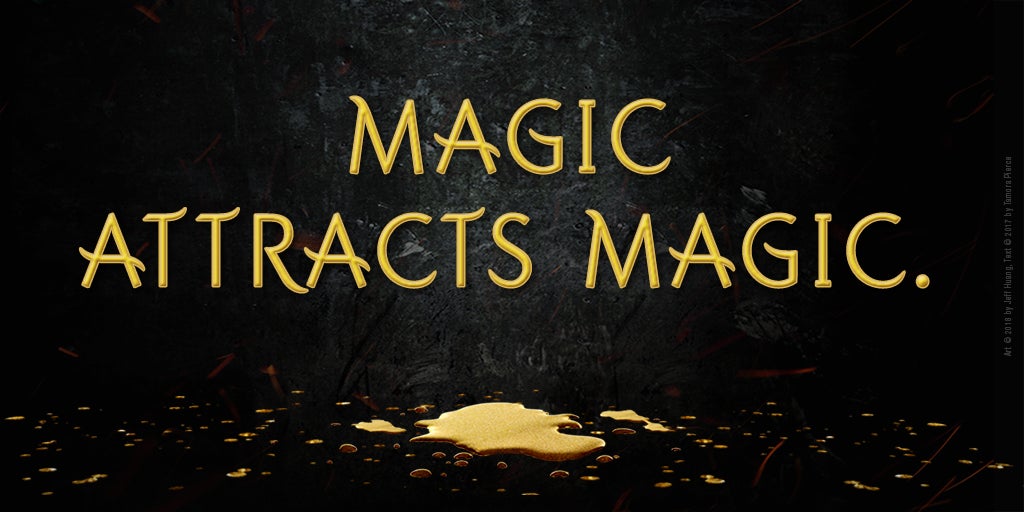
7. What is your writing process?
I try to get some work done between ten and noon, though that’s not always successful—there’s feeding indoor and outdoor critters, breakfast, appointments, conferring with my assistant till one or two, that sort of thing. There’s also correspondence. Mostly I don’t really sit down to write until around two or three in the afternoon, every day of the week except Sunday (social day) and maybe Saturday if I’m lazy.
I have to cuddle Autumn, my fuzzy tortoiseshell cat (all our cats are rescues of one kind or another) until she gets bored or her kneading starts to draw blood. That’s a given.
My desk backs up between two bulletin boards, where I keep the photos of people and places I base my book’s characters and places on, plus a few mementos. I’m not really good at vivid descriptions unless I have pictures—I can’t remember images unless I’ve been familiar with them for years. This is also why I base things on real people and places, so I have a place to start. I have five sets of bookshelves with my reference texts on them—medieval, Renaissance, and classical history, fashion, weapons, and customs, straight history and maps of as many countries around the world as I think I might need, including kids’ reference (more pictures), cookbooks (a good cookbook will tell you more about its culture than just what to put in soup), and books that cover the world in general (how people eat, how people work), as well as my scrapbooks. Behind me are my language books, name books, stone and gem books, plant books, occult books, travel guides, and animal books, as well as my drawers of pictures of people from all over the world, separated by age, sex, and color, to use for characters. (Another cabinet of drawers, under my good map of Tortall, holds personal papers and my three drawers of maps from every place I can get them.) Oh, and in front of different shelves I have either clusters of miniature animals: cats, elephants, marsupials, bunnies, turtles; assorted jars of stones; or varied kinds of rough opals. Believe it or not, all of these things are for research.
On the desk itself is my printer, my stand for holding paper when I want to type from it, my music apparatus, my big computer screen, and all kinds of doodads and papers. The work in progress is in a covered plastic file box, next to my keyboard, on top of a stand, and a few other places, mingled with stuffies, antacids, stones, figurines, wrist braces, my bottle of water, a carousel of writing tools, several notepads (yellow steno with the red line down the middle). There’s other stuff—I haven’t numbered the stuffies (I have an ugly habit of “liberating” any stuffie that looks unhappy when I see it as I travel, which is how I ended up with eight Cracker Barrel opossums before my husband asked and said they would never throw the last one out because they’re CB’s signature animal, so they always make more), or the plastic boxes with manuscript drafts and mementos.
I sit, play a game on my iPod or iPad, answer mail, then get to work. I do a minimum of two pages, breaking only to look things up or check something earlier, then get up and fool around for a short while. Back to work for at least two, maybe more pages. I used to do seven pages a day. I had a bad several years, and now I’m working my way back. It’s different with a second draft. I regulate myself less because I’m more caught up, but if I catch myself goofing off, I go back on the clock. Also, I’m supposed to have five pages a day when I’m working with my writing partner, Bruce Coville, which keeps me on track.
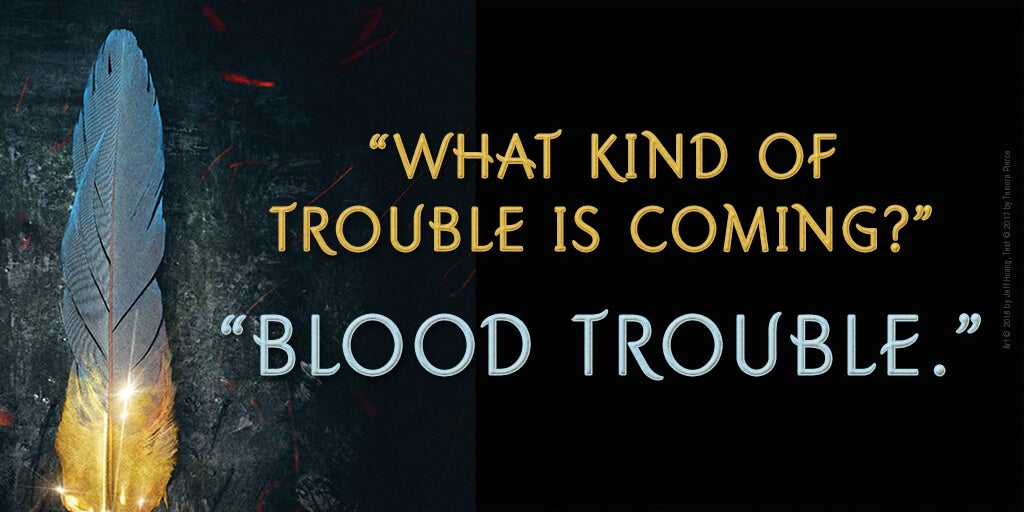
8. What is your all-time favorite book or author?
I can’t name just one! I can’t even name just one if you ask me to name who it is right that very second! Do I pick Barbara Hambly’s The Ladies of Mandrigyn, Robin McKinley’s Deerskin, Sarah Beth Durst’s Into the Wild (or Out of the Wild, with its demented attack on Graceland)? What about Dorothy Dunnett’s The Disorderly Knights, which introduced me to the Knights of St. John Hospitaller and Suleiman the Magnificent? Stephen King? Mark Twain? Dumas’s The Three Musketeers and its sequels? N. K. Jemisin, Rachel Neumeier, Georgette Heyer? Charlaine Harris, Gail Simone?! I can’t do it!
9. What was your most embarrassing moment as a teen?
In ninth grade, my gym teacher in California tried to talk me and my mother into my taking “special phys ed” (gym for those with physical or mental impairments) because I was unable to perform as well as my classmates in gym. I thought I was going to die. I flat-out refused. I said that I was regarded as too different as it was: being far too smart; reading far too much; being unable to afford the gym uniform, shoes, and socks; being far too shy; having parents who were divorced (not common in those years); and being on welfare—I was not going to put the stamp on it by entering that class. They finally had to give up and let me struggle through their Kennedy Fitness Plan classes. It only lasted till Thanksgiving. We moved back to southwestern Pennsylvania, where very few kids could have afforded special shoes, socks, and uniforms, so they weren’t required, and gym was conducted at a pace where everyone could take part.
11. What is a fun fact about you that your readers might not know?
Well, they already know I rescue animals, to the point that—when living in New York—I would grab pigeons who had gotten string tangled around their feet and cut the stuff off as much as I could. In those days, I used to bring animals home and then call my husband to tell him about the new arrival, and readers know about his reaction. They know that, outside school, I use profane language more than I should. They know I used to act for radio, specializing in nice young women, homicidal housewives, and crying babies. And I made it to my yellow belt test in tae kwon do, then I tore the ligament behind my left knee. I think that’s all the important stuff. Oh, and I like to terrify entire rooms full of students, or teachers, or executives when I speak in public.
12. What is the one thing you want readers to know about Tempests and Slaughter?
Arram (Numair) does his best to work his magic in the exact, proper way, but . . . well, he’s kind of a klutz. And he doesn’t always concentrate. And sometimes he draws things to him without realizing it and they really muck up his day. Life. Whatever. But he has friends to help: Ozorne and Varice. So he should be fine.
